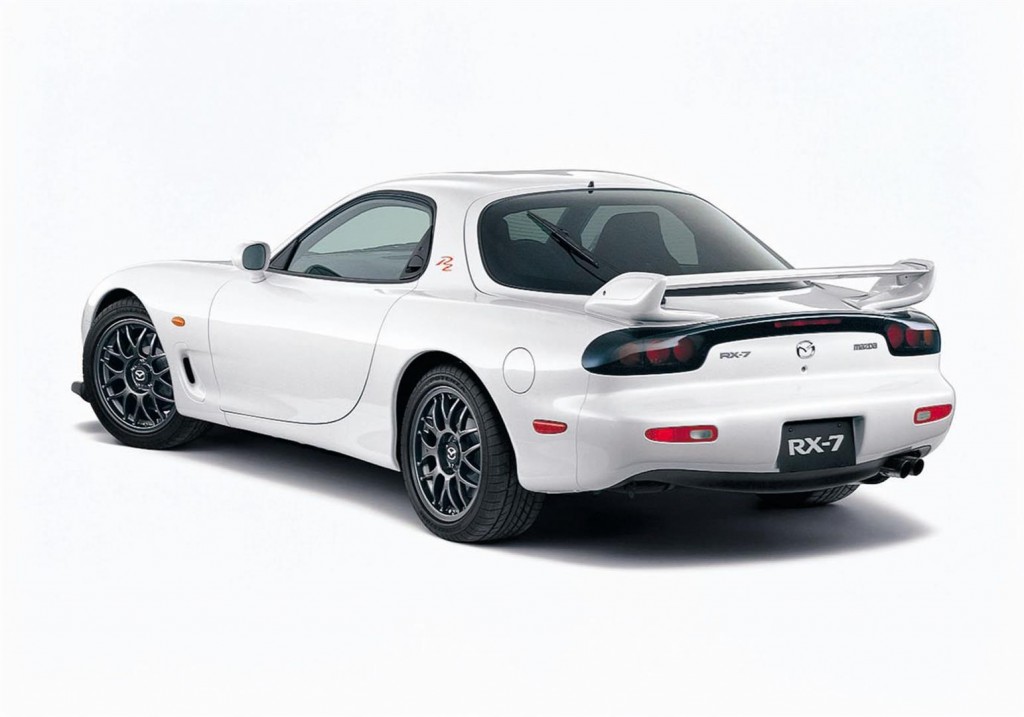Rotary engines were offered in most of this Japanese carmaker's models until the oil crisis of 1973 to 1974, when skyrocketing fuel prices pushed the peppy but thirsty powerplants out of favour with consumers.
Unfortunately, the Japanese carmaker decided to drop the engines for most of its saloons, hatchbacks and wagons — almost abandoning them entirely.
But then-head of R&D Kenichi Yamamoto resisted by arguing how crucial a differentiator the rotary was for the company.

Yamamoto then led the team of engineers that developed Mazda’s first rotary engines in the 1960s set out to overhaul the existing 12A engine and significantly improve fuel economy.
Among other things, his team added more durable apex seals – a problem spot – and improved lubrication.
They then helped design the ideal vehicle for it which resulted in a small and light yet smooth-running, powerful and rev-happy rotary sports car that became a sleek, low-slung coupe with a wedge-shaped nose and wraparound window on the rear hatch.
By 1978, the first RX-7 (FB) sports car began rolling off the production line headed for the mass market with its compact rotary engine and would subsequently go on to thrill driving enthusiasts the world over.
The distinctive howl of the RX-7’s twin-rotor powerplant turned heads at European race tracks in the beginning and managed to win the British Saloon Car Championship in 1980 and 1981 as well as taking overall victory at the 1981 24 Hours of Spa – the first Japanese car to achieve this.

Over in the US, this Japanese sports car won over 100 International Motor Sports Association (IMSA) races, more than any other model of any brand.
The FB had a kerb weight of just over a tonne and came with a near-perfect 50:50 weight distribution.
The engine sat behind the front axle for a mid-mounted setup for the 1,146cc 12A twin-rotor engine that was able to produce a respectable 100 to 135PS for the rear wheels at that time.
The 12A was later joined by a 160PS turbocharged version for Japan, while North America got a slightly larger 13B powerplant with fuel injection.

In 1985, the second-generation RX-7 (FC) was introduced and featured a Porsche-inspired design as well as a number of performance improvements that included Dynamic Tracking Suspension System (DTSS) as well as turbocharging.
Forced induction proved to be very well suited to rotary engines thanks to their exhaust flow characteristics, and quite effective for boosting mid-range torque.
The 1.3-litre 13B was standard for all markets soon after, and although the RX-7 would be offered in Europe initially with a naturally aspirated 150PS engine, a higher-tuned 180PS and later 200PS twin-scroll turbocharged versions would follow.

The higher-powered model could achieve a 0 to 100kph sprint time of just 6.0 seconds before reaching a top speed of 240kph.
The third and final generation FD model arrived in 1992 and came with a new sequential twin-turbocharger that boosted output from the latest 13B engine to 239PS on the European version.

Said by fans to be the best handling of all RX-7s, this 1.3-tonne two-seater sports car could sprint from 0 to 100kph in 5.3 seconds and reach an electronically limited top speed of 250kph - putting it in a league with other high-end sports cars – fitting for the brand that had just won at Le Mans.
Unfortunately, the RX-7 was discontinued in most of Europe by 1996 due to emissions regulations and eventually boosting power output on later Japan-only models to as high as 280PS.
The year 2002 marked the end of Mazda's exceptional sports cars with a total of 811,634 units produced between 1978 and 2002.

2003 saw the arrival of the RX-8 that brought about the hydrogen-powered rotary RX-8 Hydrogen RE which could run on hydrogen or petrol as well as the Premacy Hydrogen RE Hybrid multipurpose vehicle featuring an electric drive motor and a dual-fuel rotary.
Later, the company developed a prototype Mazda2 Electric Vehicle (EV) with a small single-rotor engine used as a range extender.

A similar system would find its way onto the Mazda MX-30 with an entirely new battery-electric crossover sport utility vehicle that recently made its arrival.
Nonetheless, the RX-7 remains the icon of rotary-powered sports and production cars.
Thanks to the RX-7, Mazda was able to learn much from its endeavours that included lightweight engineering, sporty design and infusing fun into its vehicles - something that has managed to trickle into current Mazda models of today.
Mazda reached its 100th anniversary on Jan 30, 2020. It celebrated the milestone by revealing on April 3 its 100th Anniversary Special Edition series, a range of special versions of all the key passenger cars in its global line-up.




















